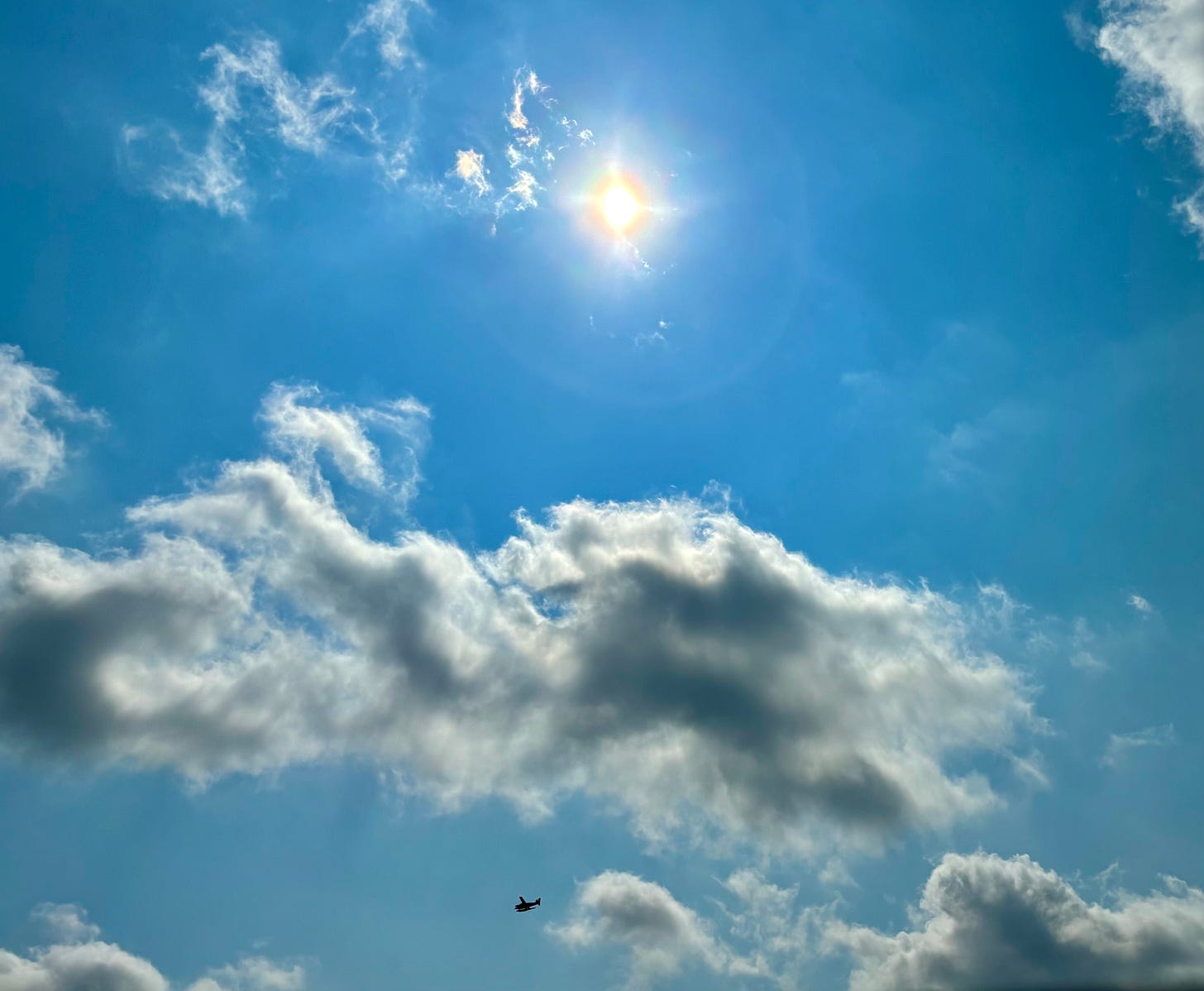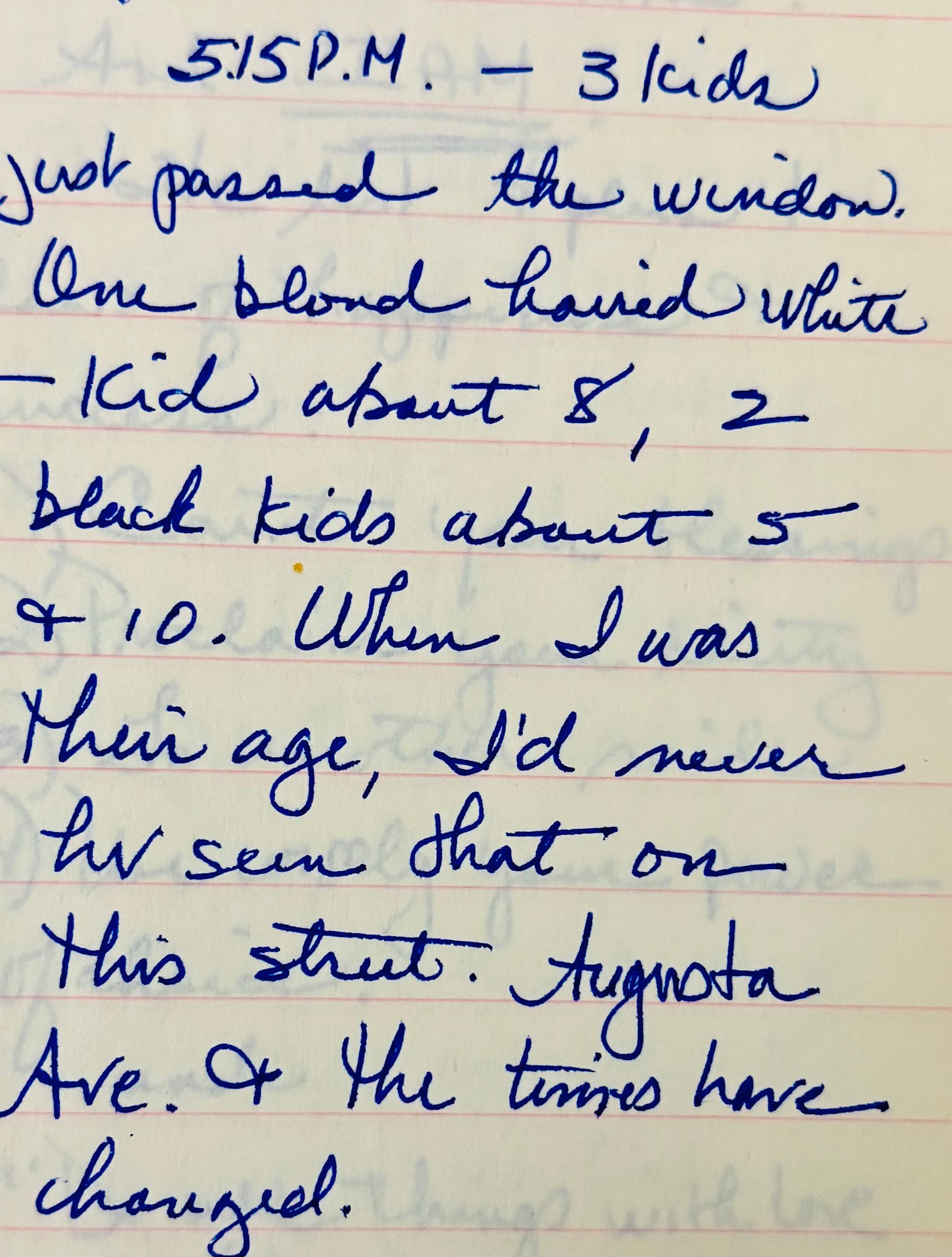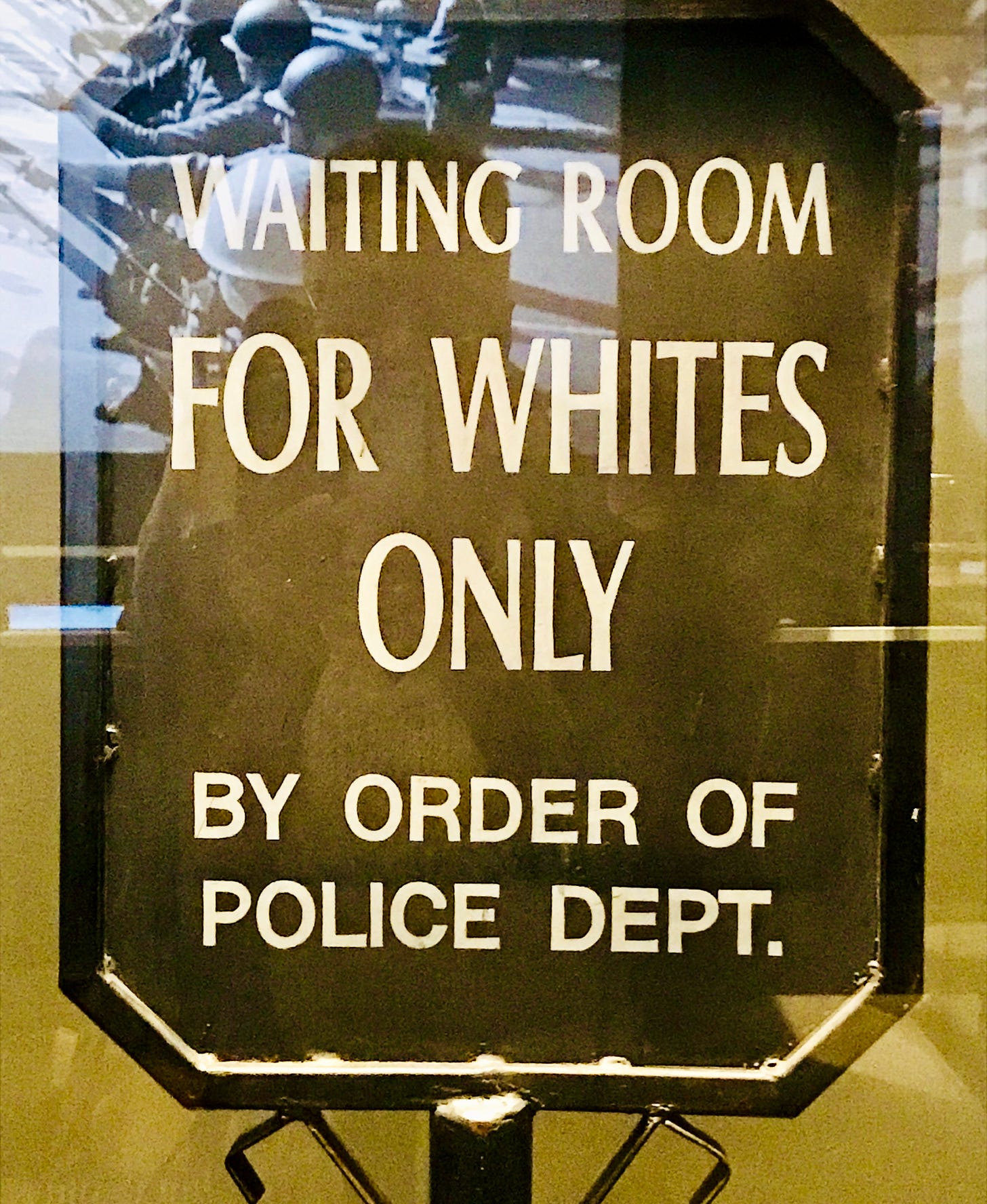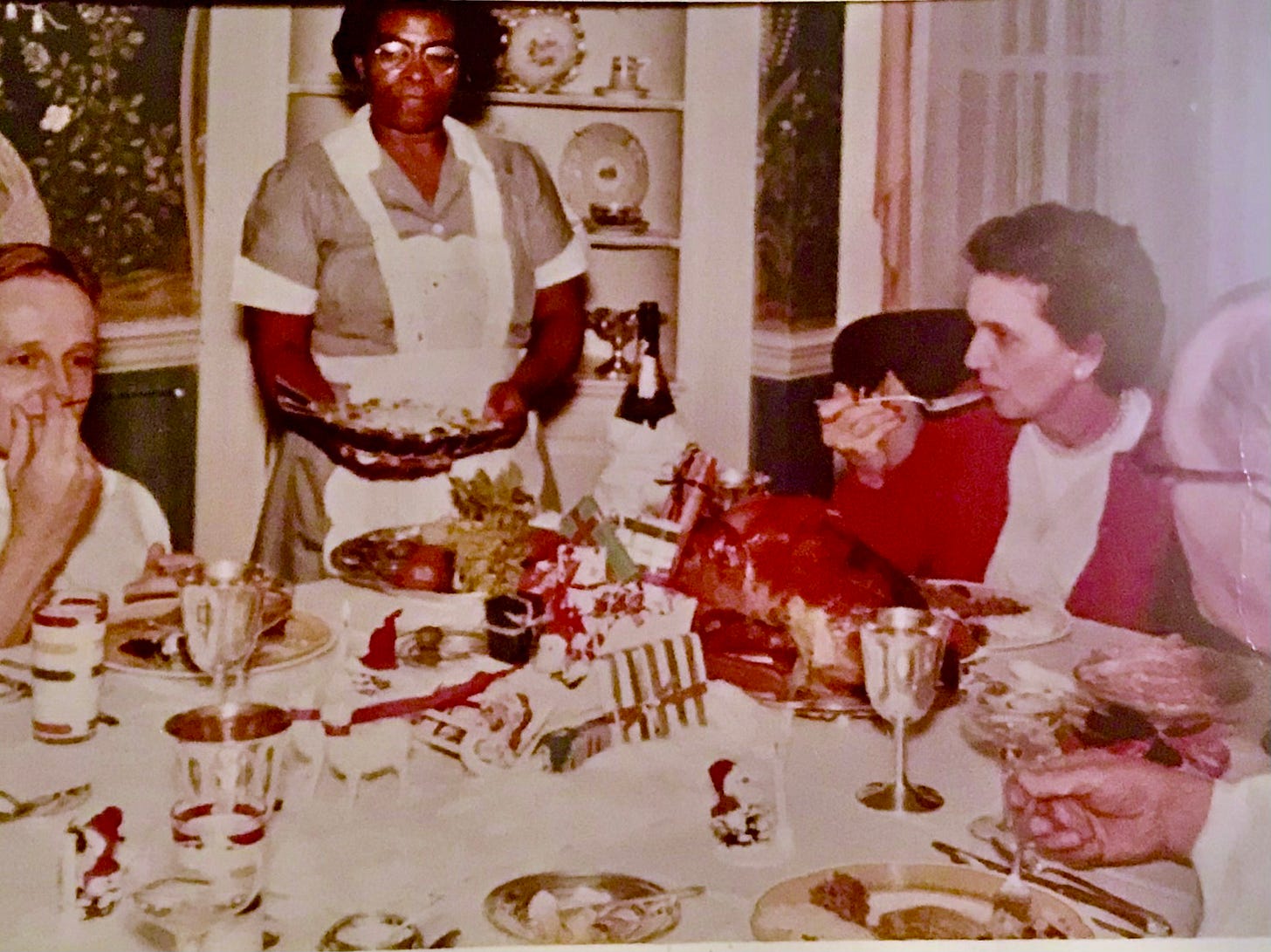Dear Reader…I’ve written a sentence or two in the description of my Substack
, but not much about me. This piece is about me in ways I’ve not discussed in my Substack before. Enjoy and please leave a comment. Today I’m writing about memories of the 50s, 60s, and 70s. Do you have memories of these periods? I’d love to read them.Thanks to
and for inspiring me to write this morning.While cleaning out a storage locker in February 2025, I found 6 journals I had not seen in more than 20 years. Three were steno pads and the other two were writer’s notebooks, each page having a quote as a prompt. The journals are very insightful into what I was thinking and doing between 1960 and 1986. I have at least another 20 journals that I’ve started since 1986 and am continuing to add to the collection. The 6 pictured here are full. Some of the later ones are 1/2–3/4 full.
I never needed a writing prompt. My imagination coupled with a love of writing, observing people, situations, and nature always provided a subject to write about…like the photo below: Helicopter under the sun.
From the early 1960s through 1985, I wrote a lot about social and political situations in America: the assassination of Medgar Evers (1963), John F. Kennedy (1963), James Chaney (1964), Andrew Goodman (1964), Malcolm-X (1965), Rev. Dr. Martin Luther King (1968, and Robert Kennedy (1968). These were turbulent times for our nation and me.
In 1961, I left Georgia to live in New York. I was very familiar with NYC because I’d spent my summers there since a very young child. In fact, mom chose to go to GA to birth me so that her mother could serve as the midwife and nurse who helped ease me into the world. Otherwise, my birth would most likely have occurred at Sydenham Hospital, NYC. It wasn’t far from mom’s apartment so I imagine that’s where I might have been born.
My first attempt at journaling began in the 1950s, maybe around 4th or 5th grade. I loved sitting at the table sharing thoughts on the pages of a diary my grandmother gave me as a Christmas present. My love for writing took a sharp blow when I found my aunt and grandaunt reading my diary as they stood in from on the dining room fireplace laughing. Laughing!!! I was crushed.
I have no idea what triggered their laughter, but their actions brought heavy tears and screams. I snatched the journal from them and threw it into the fire. I flung it as fas back into the flames as I could so they couldn’t reach it. They tried but were shocked at what I did that they soon just let it burn. I can still feel the outrage in my spirit that two of the people I trusted and loved betrayed me like that. It stopped me from journaling for several years. After all, they had found my hiding place. What if others did, too?
I didn’t start journaling again until after high school. In fact, it was during undergraduate school. I wrote a little here and there but not much. The anxiety that someone would read my private thoughts was high. Writing on Substack has helped with lowering my anxiety on one level while making me more aware of what I want to disclose.
Here’s an excerpt from one of the earlier journals. It’s short but had a powerful impact on me. I wrote this in the late 1970s, early 1980s.
I wrote this note while gazing out our first floor picture window. It was a sight to behold. A white child and two black children happily dancing down the street holding hands and laughing. Even though I was inside my home, I could hear them as they were right in front of our house. Our house stood at the top of a “T,” and they were just turning the corner to dance down the street perpendicular to the one I lived on.
I was amazed. I couldn’t remember ever seeing a white child in our neighborhood playing with black children even though white children lived two or three blocks away. Actually, some lived just houses away from black families.
The note above was written years after the Augusta riots of 1970. A major aftermath of the riots was passing a law to enforce integration.
“The state of Georgia was not ready, even as late as 1972, to accept school integration.… It took a federal court order to force desegregation in Augusta. It was an order that was not lifted until 2013."
Another response to the order to integrate was white and black parents boycotting school.
The picture above illustrates what many classrooms in Augusta looked like in Winter 1972. That makes my journal entry years later all the more pertinent. Yet, I watched these 3 children joyfully skip down the street. Their image, in my mind, helped issue in a new Augusta. Still, it took another 41 years before Augusta lifted the order of forced integration.
I was in Augusta May 1972. I didn’t hear anything about the riot of 1970 or the boycott of February 1972. I met with educators, businessmen, neighbors, and just plain folk. My meetings were shared expressions of care and grief as I was there to attend my grandmother’s funeral, not to have business meetings. I stayed there from May to August. Not once did anyone mention the February boycott that had emptied schools just months before grandmother died.
In fact, I knew and know many Augustans and have never had a discussion with any of them about the racial tension that was present. I was surprised then and now that the subject never came up. That doesn’t mean they didn’t or don’t talk about race relations and social interaction.
My own Augusta family is racially mixed. Two cousins are married tp white women. No one in our family was especially surprised. The heart loves who it loves though it isn’t always good to only follow the heart.
Augusta had always had mixed/interracial couples. We were a mixed family before the cousins married someone white. That happened decades before. There is also Native American, verified via Library of Congress records, Hispanic, and Chinese in our family.
My ancestors—grandmother and grandaunts—did a lot to protect me and my siblings from the racial strife that was raging in Augusta during the 1950s, 1960s, and 1970s. We were aware of racism. That whites rode the front of the bus. That we could be asked to move, give up our seats, stand if a white person got on the bus and there were no seats available. We were familiar with the signs in some stores and other public places.
I remember going to work with my grandmother. We always entered through the back door. The room where she changed into her maid’s uniform was an inside, next to the garage bathroom that connected to the main house. If either of us needed to use the bathroom, we used that one. Her employer would no doubt have been furious or perhaps punished my grandmother if they knew I used the guest bathroom on the first floor when they weren’t there.
Memories of segregation and integration remain not so deeply buried in my spirit. America, I believe, is more segregated today than it was when my ancestors were alive. Yes, there have been many changes; and it is the demographic changes that scares white America more than it did pre or post emancipation. The prediction that the country will be more ethnically and racially diverse creating a white minority. That is triggering deep anger and violent attacks of racism in 2025 with the expectation of extending far into 2060.
Memories of segregation and integration are right on the surface, more easily stirred than in the past. My spirit is ever “on alert,” and my soul is looking harder for peace and solace. In the “in between time,” I breathe and express gratitude for each day.
References
https://en.wikipedia.org/wiki/List_of_assassinated_American_politicians
https://www.augustachronicle.com/news/
https://www.census.gov/content/dam/Census/library/publications/2020/demo/p25-114
https://nmaahc.si.edu
https://archives.libraries.emory.edu











Thank you for sharing your story, Dr. Marshall. When will we ever learn?
I have a poem called "Pivot" I will release in the next month, I share about some experiences of touring the Sydonie mansion in Zellwood, Florida and I vividely remember the architecture of being so segregated. This was so eye opening, to think of how our ancestors were there to only be seen when they served. Separate kitchens, take the back entrance to the hidden stairwell. There's a book by author Susan Mccarthy called "Lay That Trumpet in Our Hands" that covers the history around these events. I got a chance to meet her and discuss the book, wrote a poem about it here https://tinyurl.com/5yydzxzj . I'm currently in Georgia and I've gone through some of the archives in the public library in Aiken, SC. Any suggestions for access to archives here in the Augusta area also? My family also had property here behind the Aiken airport before they fled North ( I write about this in my poem called "Like John Henry | Drive" https://tinyurl.com/4pjkzxvj ). Thank you for sharing Dr. Marshall, I always enjoy reading your history and archives, I do the same in my family. We must preserve these stories.